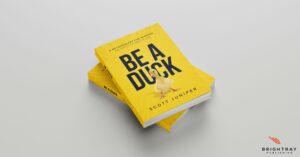For Traditional Publishing Houses
As a soon-to-be published writer, you’re passionate about your book and now is the time to make others passionate about it too. Whether you are working with an agent or pitching directly to publishing houses, the best way to successfully catch attention is to write a winning book proposal. Here, you’ll learn what a book proposal is and why you need one. You’ll also understand the key components included in them such as the hook, target audience, competitive analysis, marketing plan, author bio/platform, outline, and sample chapter.
What is a Book Proposal?
A book proposal is your one opportunity to make a great first impression. It’s a persuasive document meant to convince a publisher to spend their valuable time and money on your book idea. It serves as a business plan that makes the case for why your book should be published and why it will sell in today’s market. Publishers need to know if it will be economically feasible for them to publish your book. Given that most books are acquired based on the book proposal, not the manuscript, you’ll want to put your creative energy into writing a book proposal that wins them over.
Why Do You Need a Book Proposal?
You’re probably thinking, “I just spent all this time pouring my heart and soul into writing my book, why can’t they just read that?”
The short answer: most publishers receive hundreds of book proposals on a weekly or even daily basis, and they don’t have time to read the full manuscript from every person who submits one. Most nonfiction manuscripts are typically 40,000-70,000 words or more, so giving them proper consideration takes time.
When it comes to pitching your book to one of the traditional “Big 5” publishing houses, you’ll need a reputable agent before they’ll even accept your book proposal. Check out Looking for a Literary Agent on our blog for more guidance.
The “Big 5” publishing houses are Penguin Random House (which now owns Simon & Schuster), Hachette Livre, HarperCollins, Macmillan Publishers, and Houghton, Mifflin Harcourt) and their many imprints. There are also numerous other traditional publishing houses, such Scholastic and Wiley & Sons. If you’re unsure which publisher is right for you, here is a helpful PDF reference, 2021-2022 “Key Book Publishing Path” by Jane Friedman.
The Key Components
Keep your book proposal between 1-2 pages. Your heading at the top of the page should include your name, email address, phone number, and the title of your book. Always remember that less is more when trying to sell something to someone, so be as concise as possible.
- The Hook
Start by giving a brief description of your book and include the title. This is where you want to attract, entice, and lure the publisher in to read more. You need to create intrigue and connect with them right in the beginning. Sam Horn, the intrigue expert, has an excellent book to help you do exactly that titled, Got Your Attention?: How to Create Intrigue and Connect with Anyone (Berrett-Koehler Publications, Inc. 2015). The knowledge you gain from Sam’s book will not only help you with the “hook” in your book proposal, but all of your future writing as well.
- The Target Audience
As the author, you already have an idea of who you’re writing the book for. Identify and define the specific audience your book will primarily target. It could be college students majoring in physics, elderly people who want to improve their memory, young women in the IT industry, whoever will derive the most value from your book. Once you have identified your target audience, you then have to provide evidence of a need for your book within this group. Gather some well-researched examples for proof. Answer the question of whose problems you are solving and who will benefit most from your book.
- The Competitive Analysis
You need to be aware of competing titles and other authors on the market, and find the niche that no one else is satisfying. What do you offer that nobody else does? What is your unique angle on the topic?
- The Author Bio and Platform
You need to answer the question of who you are. There are two critical aspects to this: your expertise and platform. What is your background, education, and experience? What is your visibility online and offline such as social media, blog posts, publication credits, websites, podcasts, and public speaking engagements? What organizations do you belong to and are active in? In other words, what are your relationships, networks, and influence within the field of your topic?
- The Marketing Plan
This plan explores the steps you can take to market yourself and your book without the help of the publisher. Almost all publishers require that you have the ability to promote yourself and your book. You can place emphasis on the followers you have on social media, the numbers of listeners of your podcasts, how many people attend your public speaking engagements, or how large your subscriber list is for your newsletter.
- The Outline
You want to give a brief outline of each chapter in your book, which should only be about a paragraph (200-500 words) for each chapter.
- The Sample Chapter
This should be a complete, well-written and well-researched, polished chapter that shows the publishers you can successfully achieve what you’re proposing to them. You want this chapter to leave them hungry for more. This is where you need to create appeal so the publisher asks to read your whole manuscript.
Closing Thoughts
By following these simple and effective steps in creating your book proposal, you’ll make it much easier for a publisher to accept it. Did you know that Jack Canfield and Mark Victor Hansen received 144 rejections for their Chicken Soup for the Soul book proposal? And J.K. Rowling’s original pitch for Harry Potter was rejected 12 times. Both book series went on to sell over 500 million copies each. Can you imagine the regret that all those publishers who rejected them must’ve felt?
Stay optimistic and never accept a rejection as the end; just move on to the next publisher knowing that you’re one step closer to a “yes.” And who knows, you could be the next best-selling author whose books fly off the shelves faster than they can publish them.
BrightRay Publishing offers all-inclusive publishing services to guide authors through this process, ensuring your proposal shines and stands out amidst the competition. Schedule a call with us today to embark on your journey towards publication success!




